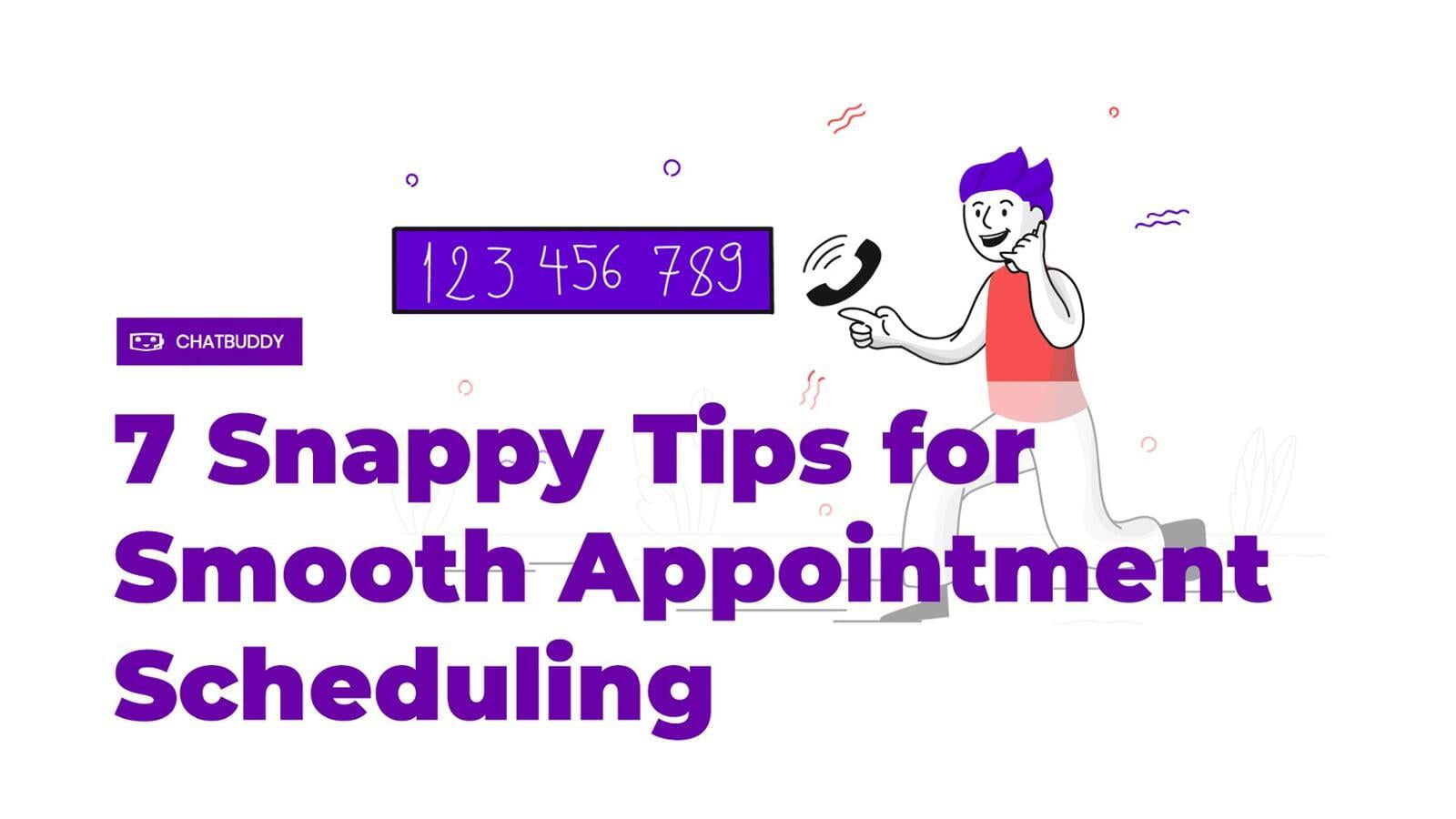We've all scheduled appointments in one way or another.
Whether it's for regular dental cleaning or for our pets' grooming, we've all either called up or messaged on SMS or Messenger to get a session or appointment scheduled. It's something that can be quickly done without much thought.
But when it’s our turn to arrange appointments for our own business, it becomes a little trickier. Whether you maintain a clinic or a service-oriented business, the same problems apply. No matter what you do to try and keep appointments on time, sometimes there are complications. Patients run late, a session runs longer than expected, an emergency happens that needs to be dealt with quickly.
And our patients and clients get frustrated, for understandable reasons.
You can't stick 100% to the schedule all the time. But there are some things you and your staff can do to make your appointment log more flexible. There are also ways to get back time lost and get the schedule back on track.
We've got some tips that you can try to help manage your appointments.
Tip #1 - Start Scheduling From Lunchtime
If you're scheduling your morning appointments, try to schedule from lunchtime downward to the morning. If you're working on your afternoon sessions, start with time slots closest to lunchtime first, and move on to ones later in the day.
Scheduling this way helps keep the bulk of your appointments closer together and minimize empty time slots in the middle of your working shifts.
Empty slots can be used to catch up with sessions if needed, or hold staff meetings or accomplish admin work.
Tip #2 - Let Your Customers Book Appointments Themselves
A recent study shows that many patients now prefer online appointment booking rather than calling in to negotiate a time. Minimize cold feet and procrastination by giving them the option to book their appointments without needing to talk to someone over the phone.
Additionally, if patients can see open slots that they can choose, your empty slots for the day or next day can also be quickly filled in, maximizing your time.
Not needing to spend more time than necessary answering the phone is also extra efficiency for you. While taking appointments over the phone is a great service to maintain for people who prefer calling in, having online booking available will cut down time spent on this task.
Tip #3 - Confirm Appointments over SMS or Email
It's important to remind your clients of their upcoming appointments over SMS or email. It's best to let software do this for you for maximum efficiency. But even if you do not have one, spending a few minutes at the end of a work day to message the next day's appointments can significantly raise chances that appointments will be honored.
No-shows are expensive and inconvenient--other people could have been scheduled in for that timeframe. Minimize no-shows by sending friendly, timely reminders to your clients and patients.
Tip #4 - Maintain a Waiting List
Unfortunately, even if we don't want it to happen, no-shows do occur. Having a waiting list available will help minimize the impact of these no-shows and fill in any gaps in between appointments.
Try to juggle between in-person and phone consultations. The latter can be quickly informed when you have availability, and a quick message to the waiting list can mean a filled-in time slot in a crucial part of the day.
Tip #5 - Double-book With Caution
For busy practices and businesses, sometimes double-booking is a sad reality. But who you double-book can change how things turn out in case both show up.
For example, if you're double-booking a new patient and an older regular patient, it's possible to stall for time while onboarding the new patient in order to get the regular client's session finished before it's time to meet the new one.
Tip #6 - Assess Appointment Length
Try to time each appointment made to check the average length of appointments. Consistently running late on appointments can mean you need to lengthen the base appointment time, in order to let you and your staff some breathing room.
Additionally, check for outliers in your patients. Do you have a regular patient who always takes longer than the rest of the people you see? Check demographics as well--perhaps your older patients need more time than others, and you can make sure that their appointments are scheduled with enough time to suit their needs.
Tip #7 - Review Schedule Patterns
You need to check your past schedules time and time again to see if there are any patterns. Studying these with your staff can help you see possible bottlenecks, rooms for improvment, and frequent scheduling errors.
Conclusion
Maintaining an appointment log can frequently be a messy thing. It’s a common occurrence in many practices: wrinkled notebook paper with many write-overs and erasures as patients and clients come in and change appointments to fit both their busy schedules and ours.
It’s tempting to see this as the normal way to do business, but you don’t need to put up with it. You and your business or practice deserves more than a messy schedule that doesn’t maximize your time or your staff’s time. By trying out the following tips, you might see an appointment log that is easier to maintain and better for your staff:
- Start scheduling from lunchtime.
- Let your customers book appointments themselves.
- Confirm appointments over SMS or email.
- Maintain a waiting list.
- Double-book with caution.
- Assess appointment length.
- Review schedule patterns.
It takes some careful planning and assessment, but taking the time to sort out how you schedule appointments for your clients will make your practice run smoother. Whether you open up online booking for appointments or take appointments via phone calls, the above tips can surely help you manage your schedule.
Maximizing your schedule to provide for your clients doesn't need to be rocket science.

